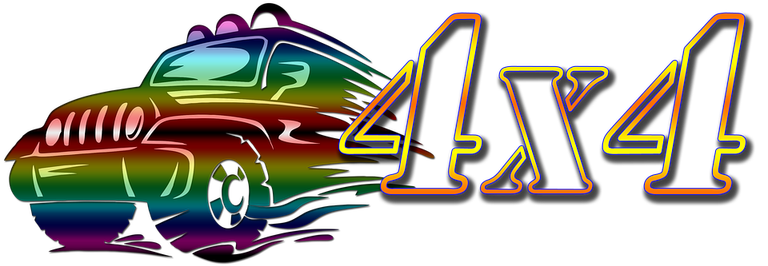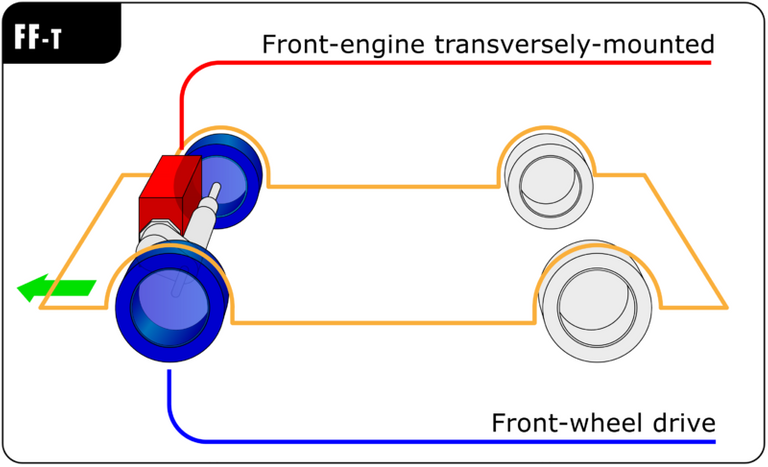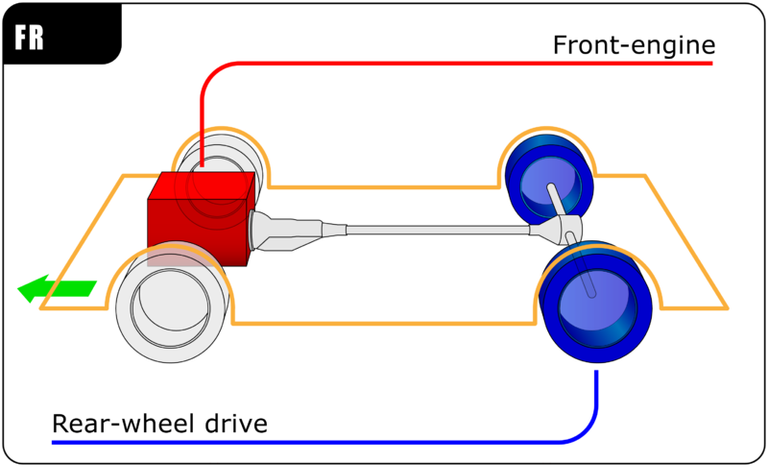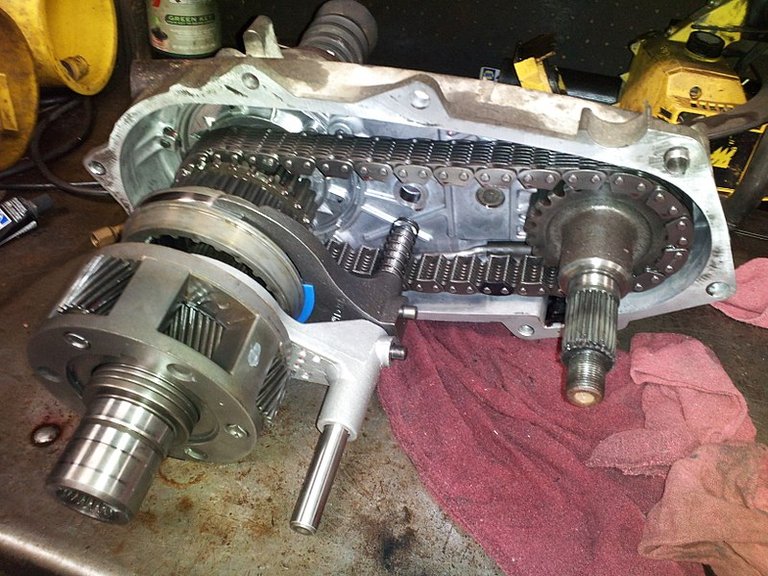I would not be exaggerating if I said that the automobile is one of the most abundant - if not the most abundant and widely used piece of technology in the world today (someone say amen to that!). All over the world, there are different types, makes, sizes and orientations of automobiles. From the small beetle cars to the large trucks and trailers oh yes! They are all automobiles.
These automobiles are usually classified in different ways. Take for instance, a kind of classification has names such as; sedan, station wagon, space bus, pick up, minivan , etc. the classifications are not limited to these names I mentioned and are numerous. In fact, where I come from (Nigeria), we have nicknames for some vehicles. You will hear something like big daddy, camry muscle pencil camry evil spirit (yes, that’s a car nickname), end of discussion, discussion continues etc. one good thing to note is that these nicknames are based on how these vehicles look and some aesthetics.
Talking about vehicle classification and common nomenclature, one of the widely known but somewhat misunderstood classifications are based on the drive wheel. This classifications include; Front wheel drive, Rear wheel drive, Four wheel drive and All wheel drive (restricting the classification to four wheeled vehicles).

image source: pixabay
I am very sure that these terms are not new to everyone. Either when buying a vehicle or just describing a vehicle, you would hear people describe the vehicles with these names. But have you paused to consider what these names really mean? Probably the first two are quite easy to understand i.e. the front wheel drive and the rear wheel drive. But for the sake of clarity, I would say one or two things about them.
THE FRONT WHEEL DRIVE
The front wheel drive vehicles are basically vehicles that have the power from the engine delivered to the front axle (i.e. the two front wheels are driven by the engine while the rear wheels tag along, rotating freely). This is usually characteristic of vehicles under the car category although some other vehicles adopt this mode. Apart from some exceptions, the engine in the front wheel drive is usually transversely mounted (i.e. the engine runs across from one side to the other when viewed from the front). This is simply to facilitate the transfer of the torque to the wheels on the front.
THE REAR WHEEL DRIVE
The rear wheel drive in on the other hand have the engine power delivered to the rear axle while the front wheels rotate freely. The reasons for having a front or rear wheel drive vehicle is dependent on either aesthetics, space management or to allow for a particular property. Also, the engine in the rear wheel drive vehicles is usually longitudinally mounted (i.e. the engine length runs from the front towards the back when viewed from the front. This is also to ensure easy transfer of the torque from the engine to the rear axle. The rear wheel drive vehicles usually have a drive shaft that performs that function. Rear wheel drive orientation is usually done for vehicles that do more work because it is quite easy to push than to pull
These two classifications are referred to as 2WD i.e. Two Wheel Drive vehicles. Simply because the engine power is transmitted to only two wheels at all times.
Now to the business of the day.
A lot of us see some other specifications of vehicles as 4WD (or 4X4) and AWD but we do not know what these really mean or the difference between them. Sincerely these terms are quite confusing and sometimes, car manufacturers or retailers use them interchangeably. But do they really mean the same thing?
I am sorry to burst your bubble that they do not do the same thing and the reason a car retailer would persuade you that an AWD is the same thing as a 4WD is just to make sure you buy the vehicle.
Today I would like to clear the air about these specifications but before we go on, I would like to establish some background knowledge.
First off I would like to remind us about the differential. I wrote a post about the differential some time ago. You can check here if you missed that. Simply put, the differential is the part of the automobile drive train that splits the engine output torque between the two wheels at an axle. This split is to enable the wheels rotate at different speeds as a result of turning or slipping of one wheel. The simplest type of which is the open differential.
Secondly, Torque. According to basic physics, torque is the product of Force F and radius R.
The engine produces torque which moves the vehicle. The torque from the engine is usually multiplied by the gears in the transmission and also in the differential
Another term I would like to talk about is the traction. Traction of a wheel simply means the grip of a wheel on the ground as a result of friction between the tread of the tyre and the floor. One interesting thing about traction is that it relates to the amount of torque that is transmitted to the wheels.
On the flip side, if there is no traction, we have a situation called slip. Slip is the opposite of traction. The lesser the traction the more the tendency of slip which is the difference between the expected speed of the wheel at full traction and the current speed.
Simply put, when the engine delivers torque to the wheels and the vehicle moves. However, traction is required to keep the vehicle moving on the ground else, the wheel(s) will slip.
Having established these points, let's head over to the main points of discourse; the 4WD and the AWD.

image source: wikimedia commons under the Creative Commons Attribution-Share Alike 3.0 Unported license.
THE FOUR WHEEL DRIVE (4WD or 4X4)
Take for instance a front wheel drive vehicle is driving in rainy conditions, if one wheel in the front axle encounters a slip (i.e. passes over a wet road which results in less traction), the differential which is usually an open differential would transfer the torque to that wheel with least resistance which would only cause the wheel to slip further and if it is a muddy situation, it would not be a pleasant sight.
This is because 1. The engine torque is transmitted only to the front axle as in this case while the rear axle just tags along. 2. The presence of an open differential makes it worse because by default, the torque would transfer to the wheel with least resistance i.e. the slipping wheel.
This type of situation is easily overcome by a four wheel drive vehicle. Why? Stay tuned!
Typically, vehicles such as the sport utility vehicles (SUVs) and heavy duty vehicles are those equipped with a four wheel drive system because of the type of conditions they are made for. Rarely will you see a normal sedan car as a four wheel drive (that is if there are any). These four wheel drive vehicles are made for off road conditions where there is very low traction i.e. high slip.
The four wheel drive vehicles are simply vehicles that have the engine torque distributed to all four wheels of the vehicle in contrast to the two wheel drive vehicles i.e. each wheel receives 25% of the torque from the engine. This enables the vehicle to easily maneuver the terrains with low traction such as off road conditions, snowy or muddy areas (you know what I mean).
How is this achieved?
The four wheel drive vehicles have a component known as the transfer case this is where the magic is done. The engine is usually positioned longitudinally therefore, the engine output shaft heads toward the back but instead of going straight to the differential on the rear axle, it first enters the transfer case. The transfer case is where a shaft collects torque and transmits to the front wheels. The diagram beside is a transfer case and as you can see, the shaft on then left is the one coming from the engine and it is connected via a chain to the shaft on the right which returns to the front axle differential. On the other end, a shaft carries torque to the rear axle differential. That way, both the front and rear axles get the same percentage of torque and there is good traction for the vehicle.
Happy right? I am sorry to burst your bubble once again, that’s not the end of it.
If a vehicle operates with 25% torque each to the wheels, that means the wheels would spin at the same speed. This my friend, is not good for on road conditions where there is enough traction and simple actions like turning at a bend or maneuvering will be very difficult and might cause what is known as drive-line wind up (simply put, things will break!).
To counter this, vehicle manufacturers have presented two options for the 4WD vehicles; the part time 4WD and the full time 4WD.
PART TIME 4WD
As the name implies, the part time 4WD simply enables the user to switch between 2WD and 4WD. When the user switches to 2WD, the transfer case disengages the front axles and transmits torque to the rear axles only. That way, the menace of drive-line wind up is presented as the vehicle is as a 2WD on good traction. And when the need arises, the user can switch to 4WD to tackle the tough and low traction terrains.
If you are conversant with the 4WD vehicles, you would see that it has setting for 4LO, 4HI, 2HI. Well, simply put, the LO gear is meant for very tough terrain where a lot of torque would be required. It includes a low gear ratio which introduces more torque. the opposite however is the 4HI which gives high gear multiplication of torque and is also suitable for off-road only that it might not be able to tackle conditions that the 4LO can. In contrast to the two is the 2HI which is basically the 2WD switch. This switching is usually done in the transfer case but that is not what I am up to today.
A part time 4WD is only recommended to be switched to 4WD (HI or LO) ONLY in off road or low traction conditions in order to prevent driveline wind up.
FULL TIME 4WD
As the name implies, the full time 4WD vehicle is always on four wheel drive mode i.e. equal torque delivered to the wheels.
I expect you to wonder, “if the four wheel drive setup is not suitable for normal driving, why make it full time?” well, here is the answer.
The full time four wheel drive actually contains a differential in the transfer case thereby bringing the number of differentials to three. This differential helps to compensate for the situations when there is need for different speed on the wheels i.e. optimum traction conditions.
So here is how the drive train looks like. The engine output is delivered to the transfer case which with the help of the differential in it, helps to split the torque differently (in contrast to the equal split in the part time 4WD) before the axle differentials also do their job.
The part time 4WD also has the HI and LO options but there is no 2HI as it cannot be switched to 2WD. However in the eventualities where there is need for extreme torque, the differential can be locked to allow 50:50 split between the axles just as the part time 4WD.
Some people actually refer the full time 4WD as an All Wheel Drive (AWD) but to a good extent, it is not!
What then is the All wheel Drive?
ALL WHEEL DRIVE (AWD)
As the name imply, the all-wheel drive vehicles have the four wheels receiving torque at all time. The difference however between the All-Wheel Drive and the full time or the part time four wheel drive is that the torque distribution is fully automated and there is no need for driver input in any situation whatsoever. (cool isn’t it?). The all wheel drive is not as robust and doesn’t have as much mechanical parts as the Four Wheel Drives and thus, they are not really made for off road conditions. All wheel drives simply present the normal road user with a vehicle that has capabilities of the 4WD and can operate smoothly on good traction. The AWD has more stability and performance than the 2WD but cannot perform as well as the 4WD on tough terrains. The AWD does not really have a 4LO setting as in the 4WD and thus cannot perform as much.
There are also two types of AWD; the full time AWD and the automatic AWD.
Just as the name imply, the full time AWD is always supplying torque to the four wheels but is smartly controlled either by a mechanical (transfer case) or electrical devices. The full time AWD is able to vary the delivery of torque to each of the wheels depending on the slip or traction while giving the drive experience a sporty feel and very similar to the 4WD. The AWD can perform fairly well on off road conditions but as I said earlier, not as much as the 4WD.
The automatic AWD on the other hand is like the part time version of the AWD. It functions like a 2WD in normal driving conditions but in the eventuality of a slip occurring, the system senses the slip and activates the wheels on the other axle to compensate for the traction needed to release the vehicle. The sensing of slip is made possible by series of sensors and systems that collect information about the speed of each e=wheel and is monitored by the ECU. As soon as one wheel is rotating faster than the other, the ECU activates the other axle and the vehicle steers free of the slip. The automatic AWD however is not suitable for off road conditions as they are not as rugged as the 4WD. They perform best on the road with good traction and are efficient for driving in harsh conditions.
CONCLUSION
The Four wheel drive and all wheel drive vehicles are very similar but their applications and certain components in the drive train differentiate them. To summarize all I have written, it can be said that; the part time four wheel drive has two differentials while the full time 4WD has three. The four wheel drive is most suitable for off road conditions and should never be switched (in the case of part time) to 4WD on normal road conditions. The all wheel drive was introduced in order to combine the feel, handling and driveline performance of the 2WD and 4WD however, they do not perform as well as the 4WD off road.
The inclusion of systems such as the Stability Control Systems, Limited Slip Differential, differential locking systems and the Anti-lock braking system in the automobile also have a good effect in handling of slip and low traction situations. All these systems work hand in hand (even in the 4WD) to ensure easy maneuvers and driving.
Sincerely speaking, there are some other configurations for the 4WD and AWD depending on the vehicle manufacturer but the ones I have mentioned here are the basic ones and apply across board.
So, whenever you are going for your off road driving trip, your Four Wheel Drive has got your back! And when you get back to the city, remember to switch back to the 2Hi option to prevent your drive line from winding up. If you are a city driver but you still want the awesome handling and torque performance of the 4WD, you can opt for a good AWD.
Please feel free to drop your comments in the comment box as your feedback will be highly appreciated.
REFERENCES
Difference between four wheel drive and all wheel drive
How four wheel drive works
4WD vs AWD
2WD vs AWD vs 4WD
Four wheel drive
All wheel drive
If you write STEM related content, (Science, Technology, Engineering, and Mathematics) consider joining #steemSTEM on discord here. If you are from Nigeria, you may also include the #stemng tag in your post. You can visit this blog by @stemng for more details.





Wow, amazing write-up. The way you explained the differences between the 2WD, AWD, part and full time 4WD was really detailed.
Do you know I never knew SUV was an acronym for "Sport utility vehicle". Thanks for sharing, I really learnt a lot @rharphelle
Haha, im glad i was able to pass something.
We learn everyday!
Nicely explained..... Which would you prefer
I do prefer the 4WD for some special reason.... I can always over power the bad conditions of roads
well, preference depends on the use it is intended for. 4WDs and AWDs are not as fuel efficient as 2WDs because of the extra functions and "weight" they carry.
so for a normal office goer, a 2WD wouldnt be bad. at most an AWD if he wants something extra
I have always wondered the difference between the 4wd and Awd on saloon cars.. Now i know what they mean.
Thanks to this amazing content. Thanks for sharing.
thank you also for reading.
I know very little or even nothing about automobiles, but i have noticed many automobiles having 4wd written on them, and let me confess, i used to pronounce it as "forward"🙈.., didn't even know what it meant.
I'm still laughing at myself rn, but i'm glad i know it now, and i don't just know what 4wd stands for, but i can write a textbook on it😊
Thanks for the enlightenment.
lol. we learn every day.
thanks for dropping by
I do prefer the 4WD, I don't like to be in mud helpless.
Nice post
thank you for reading.
yes, the rugged nature of the 4WD gives it an edge.
Well written. With the suite of sensors that modern cars come with, I'm just thinking that the gap between 4WD and AWD has been greatly narrowed.
You are right.
Technology has got our back on that one.
Learnt A lot but I just need a car, 4WD, AWD, 2WD. JUST give me something with WD 😁😁😁.
Lol be careful what you wish for. A bicycle is also something WD O!
lol, abi
I enjoyed everything because it was really hard to spot the difference but u cleared it.thanks
Thank you for reading
It's OK, I af hear, make I buy one car fest😂😂
This is another awesome one bro. Well-done for the exposition...
New terns learnt....
Starlight forward...
Lol, i am preparing you for the car.
Thanks for your kind comment
LOL, indeed...
you're welcomed
Lol... At first, I actually thought 4WD is forward before I got to know the real meaning. Kudos! For a well informative post.
Lol. A lot of us got that wrong at first.
Im glad i could pass something new.
👍👍
I must confess, I myself get this aspect of automobile twisted. Thanks for the explicit explanation.
This is just cool.
If you own an automobile shop, you just got yourself another customer.
How soon? That depends.
😃
Thanks steemit Mechanic.
You own a car? Let's know coz I just employed myself as his secretary.
😂😂
I don't for now, but I should soon.
haha! Thanks.
In the nearest future, my workshop
mightshould surface.Who knows?
lol i always thought 4 WD and all WD are the same. Thanks for explaining it briefly, man.
Cheers!
You're welcome.
thanks for reading through
Always thought that both 4wd and Awd are the same. Really enjoyed coming here, new thingz to learn. Thanks for the exposition.
Thank you for reading through.
Im glad you learnt something
Everytime I come to your blog, you remind me of how much I still need to learn about automobiles
and I know a lot. Learnt a great deal here today, don't stop teaching us. BravoThank you sir.
I await your next agricultural engineering post.
Well done Sire, I can boldly stand to differentiate them now...
I think you are one of the most active authors here and this is seen in the comments of your article.
As for the article it's well written and I really enjoyed reading it. SteemSTEM is voting better and better articles lately or just the community is better :P
Regarding the eternal discussion about SUV's and 2WD and 4WD or AWD, it's only about what we need. I doubt that many of us need a real 4WD SUV to do offroad. Most of the time it's just the comfort of having it and the fact that the marketing shoves it up our.. throats :D
I have a pretty low clearance 2WD car and I have driven on dirt roads everywhere in my country. I wouldn't prefer an SUV because having an increased center of gravity would make it less stable at Highway speeds in case of a sudden avoidance maneuver (the Moose Test).
So the best choice for me would be a 2WD low clearance car or at most an AWD.
You are totally right about the marketers (they are the base of the confusion) and the performance at highway speed. The 4WD used to be a military vehicle in times past because of the terrains they might encounter, only recently that the every day man buys a 4WD for normal driving.
One thing some do not know is that the added load of the special parts tell on the fuel consumption too. But hey! who doesn't like cruising in an suv.
I prefer the AWD because it somehow gives one a taste of both worlds.
Thanks for your kind comment. steemSTEM on is like the best community i have seen here and it is nice to have people contributing knowledge from all over the world. I particularly have learnt a great deal since i joined steemit (all thanks to steemstem).
We work together to make the community greater.
Thanks once again!
Congratulations @rharphelle! You have completed some achievement on Steemit and have been rewarded with new badge(s) :
Click on any badge to view your own Board of Honor on SteemitBoard.
For more information about SteemitBoard, click here
If you no longer want to receive notifications, reply to this comment with the word
STOP